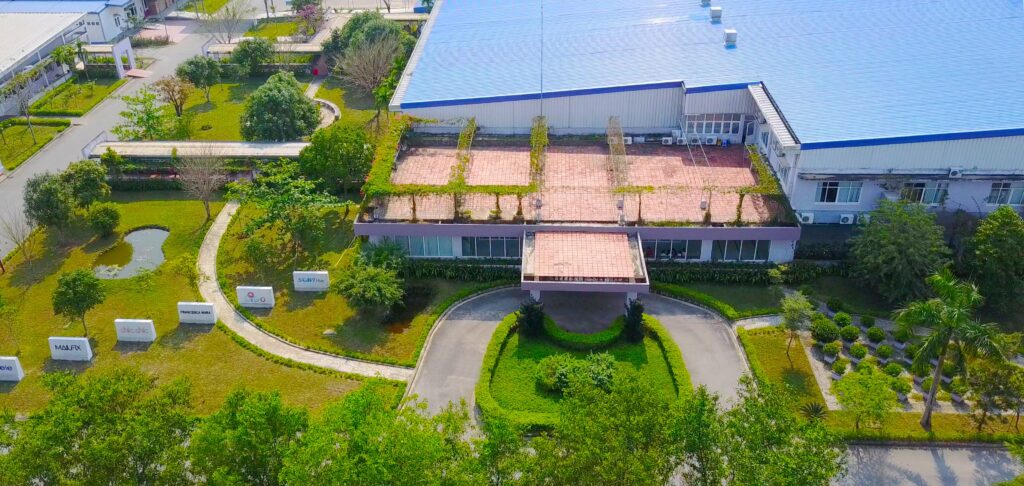
Redefining Fashion Factories – Where Production Efficiency Meets Sustainability
News
For decades, the fashion industry has been known as a global consumption giant—creating millions of jobs but also leaving a heavy environmental footprint. According to the United Nations, the textile and apparel sector accounts for up to 10% of global greenhouse gas emissions and 20% of industrial wastewater.
However, the picture is rapidly changing. A new movement known as “greening the fashion supply chain” is reshaping how brands design, manufacture, and distribute their products—starting from the most critical point: the factory.
Global Trend: Factories Becoming the “Main Character” in the Net Zero Journey
In the past, fashion brands primarily focused on reducing environmental impacts in materials and packaging. But now, they recognize that over 70% of supply chain carbon emissions come from the manufacturing stage—that is, directly from the factories themselves.
The “Net Zero Challenge: The Supply Chain Opportunity” report by the World Economic Forum (WEF) highlights:
“If the eight industries with the highest supply chain emissions—including textiles, food, and electronics—achieve Net Zero, the world could eliminate up to 40% of the greenhouse gases required to meet the 1.5°C target.”
This realization has triggered a global race to green the fashion manufacturing sector. From Bangladesh to Vietnam, countless factories are transforming to achieve LEED and EDGE certifications. Leading brands such as Nike, H&M, and Uniqlo now require their suppliers to demonstrate measurable environmental and social performance before signing contracts.
“Smart – Green – Human-Centric” Factories: The New Generation of Fashion Manufacturing
Unlike the energy-intensive and mechanically driven factories of the past, the new generation of fashion manufacturing facilities is being redefined around three core pillars: Green – Smart – Human-Centric.
Green: Factories are designed according to international green building standards, utilizing renewable energy (such as solar rooftops), wastewater recycling systems, recycled materials, and natural daylight optimization.
Smart: The integration of IoT and data analytics allows for real-time monitoring of energy performance, emissions, and water usage—enabling continuous improvement and transparency.
Human-Centric: Workspaces are designed with employee wellbeing in mind—featuring natural light, stable indoor temperature, and recreational facilities to foster comfort, productivity, and long-term engagement.
These factors not only help factories reduce operating costs by 20–30%, but also enhance ESG ratings, thereby attracting green investments and premium global clients.
Vietnam’s Fashion Industry: From “Manufacturing for Others” to “Sustainable Production”
Vietnam is currently among the Top 3 textile and garment exporters in the world, generating over USD 40 billion annually. Yet, its development model has long relied on low-cost labor and energy-intensive technologies.
As key export markets like the EU and U.S. implement the Carbon Border Adjustment Mechanism (CBAM) and enforce mandatory ESG reporting, the shift toward green manufacturing has become a matter of survival, not just a branding strategy.
Many Vietnamese enterprises are now pioneering in this transformation. Their factories are achieving LEED and EDGE certifications—demonstrating that sustainability and production efficiency can go hand in hand.
In fact, investors report that the payback period for green investments ranges from just 3 to 5 years, thanks to significant savings in energy, water, and maintenance costs.
SCAVI Group – A Model of the “Green Fashion Factory”
A leading example of this trend is SCAVI Group, one of Vietnam’s top fashion manufacturers, whose “Responsible Production” strategy is reflected through green building projects certified under EDGE Advanced with consultancy from ISD Engineering.
The SCAVI Hue factory, certified EDGE Advanced, achieved remarkable results: reducing energy consumption by 81%, water use by 44%, and embodied carbon in materials by 60%, cutting over 212.64 tons of CO₂ annually. This represents not only technical innovation but also a strategic step in embedding sustainability as a core corporate value.
Meanwhile, the SCAVI Quang Tri factory, also EDGE Advanced certified, exemplifies a long-term sustainable vision. Covering a total land area of 155,070 m² (Phase 1: 27,000 m²), it features a renewable energy system with 807 kWp of installed capacity, expandable to 1,600 kWp in the future. The factory emphasizes operational automation, spacious and well-ventilated working environments, and a human-centered design that enhances productivity and employee well-being.
Together, these two projects demonstrate SCAVI’s commitment to redefining the factory model — not merely as a place of production, but as a true green building where technology, design, and people align toward sustainable development goals.
In both projects, ISD Engineering played a crucial role as the EDGE certification consultant, standardizing processes and promoting green thinking across Vietnam’s fashion manufacturing sector.

Learn more about the SCAVI Hue project: [Link]
Learn more about the SCAVI Quang Tri project: [Link]
Challenges and Future Prospects
Achieving LEED or EDGE certification for fashion factories remains a challenging journey. High initial investment costs, strict technical standards, and continuous operational monitoring are significant barriers. However, global trends indicate that green factories are no longer pioneering initiatives — they are becoming the new industry standard.
With its strengths in workforce capacity, manufacturing experience, and strong green transition policies, Vietnam is well-positioned to become the region’s sustainable fashion production hub. Consulting firms like ISD Engineering, with extensive experience in delivering LEED and EDGE-certified projects, are helping turn this vision into reality — making “green buildings” the foundation for future growth in fashion manufacturing.
ISD Engineering is Vietnam’s leading green building consultancy, pioneering the integration of international sustainability standards into practice. Notably, ISD Engineering is the first company in Vietnam to be simultaneously recognized as a LEED Proven Provider by USGBC/GBCI—affirming its outstanding capability, credibility, and consistent excellence in delivering LEED-certified projects—and an EDGE Premier Service Provider by IFC/World Bank Group, a prestigious designation awarded to organizations demonstrating exceptional expertise and performance in EDGE certification.
Contact ISD Engineering today for professional green building certification consultancy.
- Posted on
- October 31, 2025

